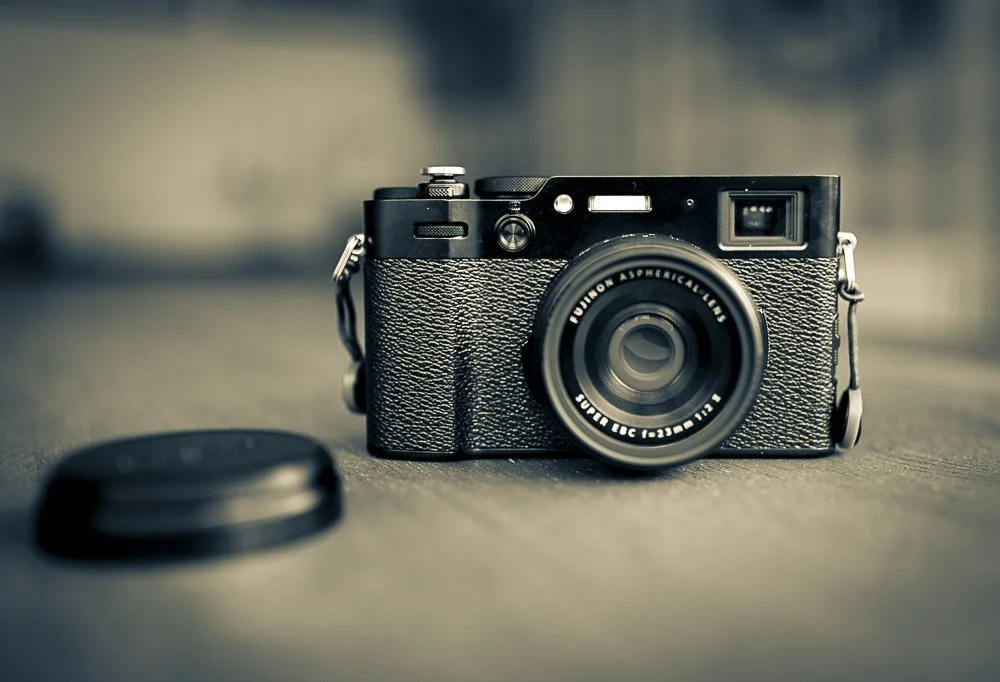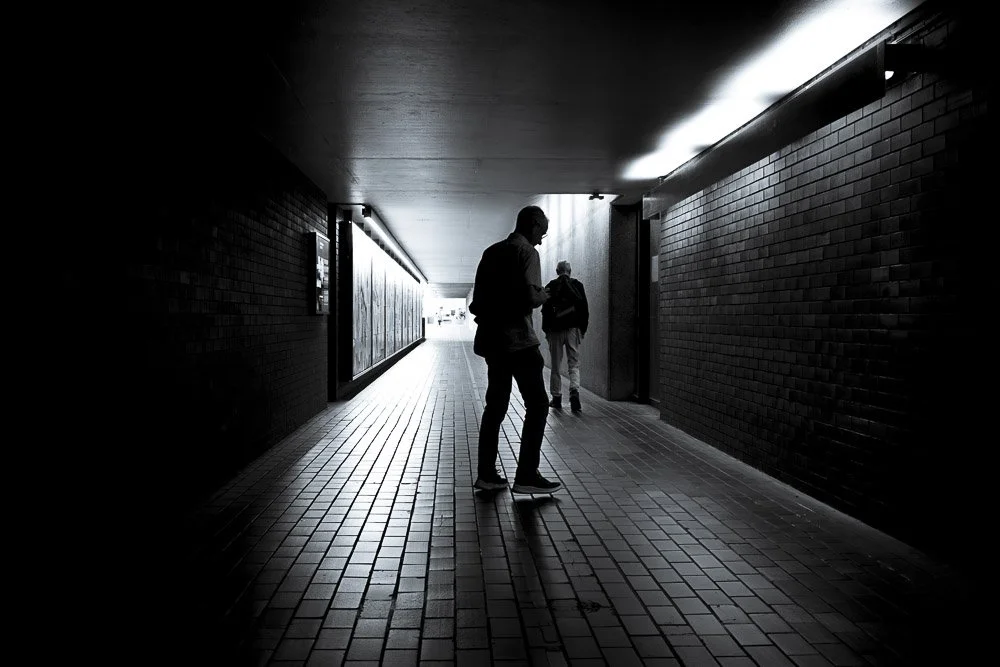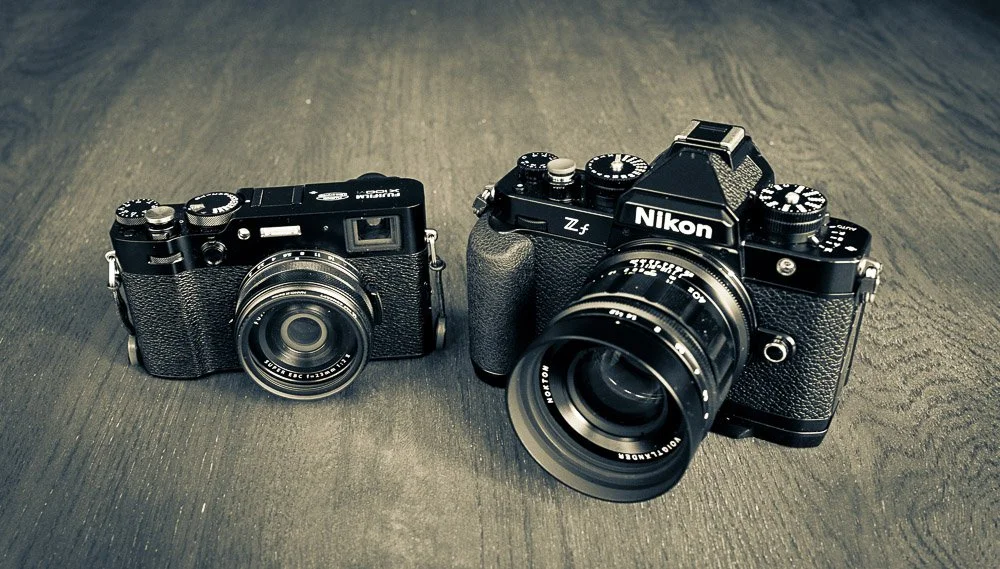Using the Fujifilm X100VI
The elegant and enjoyable Fujifilm X100VI
A Compact Camera for Street and Travel
My primary street and travel camera is my Nikon Zf but, as most users will admit, this powerful camera is also quite large and bulky, and therefore not ideal for everyday use. I work in the City of London, travelling from the East Midlands twice a week, and wanted a camera that I could slip into my pocket or laptop bag. On several occasions, I had taken my Nikon Zf along with me into work but I was always conscious that, being large, it was a heavy lift and more likely to be broken. The Fujifilm X100VI was the perfect size and powerful enough to provide quality images that I could use in my portfolio.
Good in low light - an image from the dark corridors in the Barbican Centre
What is it like to use?
Although I have owned a Fujifilm X-T3 in the past, which I really enjoyed, it still took me a while to adjust back to the menu system and setup the camera to how I wanted to use it. In fact, my first use of the camera in York had become increasingly frustrating as the out-of-the-box settings were aimed more the the snap shooter rather than someone trying to use the camera for street photography. It was two hours before I had finally worked out what I didn’t like and changed the settings to something more to my use. That initial learning curve, which wasn’t present with the Nikon Zf, had cast some doubts and I was considering exchanging the camera for a Leica Q2 that was my alternative preference - although much more expensive.
However, persistence does pay off and using the camera now is a dream. The size of the camera is perfect for my everyday use and I absolutely love the optical view finder (OVF) in preference to its electronic view finder (EVF), which is no where near the performance of the Nikon Zf. The OVF is perfect for my use and provides a modern day rangefinder experience that allows the photographer to identify subjects walking into the camera frame, which is not possible using an EVF or SLR optical view finder. That rangefinder experience is captivating and I do really enjoy the experience. Equally, it is easy to use a hybrid OVF/EVF experience or simply turn the camera into a EVF. This provides the photographer with options dependent upon light and conditions.
As with my experience with the X-T3, the X100VI autofocus is not the best on the market so I opt to use a manual focus system, which is also not ideal due to the absence of any markings on the lens itself. But, with practice, this becomes second nature and the camera becomes a powerful point-and-shoot for street and travel. The 40 MP sensor allows more artistic cropping and the resulting photographs have always been high quality - along with that Fujifilm colour.
Although the X100VI had a rocky start to my collection, it didn't take long for me to love the camera. The two key winners are the OVF and its portable everyday size. The OVF definitely had me considering a Leica M rangefinder series but, costing four or five times more than the X100VI, the cost cannot be justified. Also, I do believe that Fujifilm have introduced the more modern rangefinder OVF, allowing single-point focus confirmation in a similar manner to using a Voigtlander manual lens on the Nikon Zf. At present, the Leica M series still use the autofocus adjustment alignment box, which works just as well but requires more practice.
The summary is that the X100VI is a great camera and is definitely going to become my travel camera - and street camera while commuting.
The X100VI alongside the Zf - the size makes it a perfect commute and travel camera


